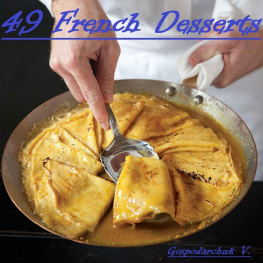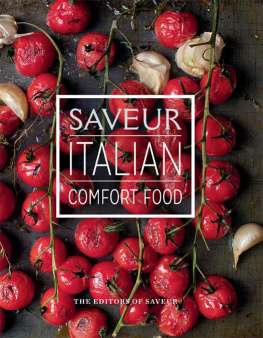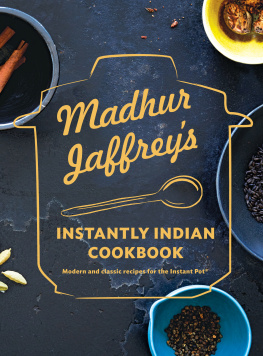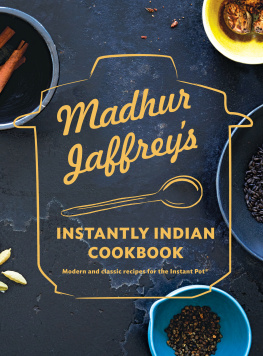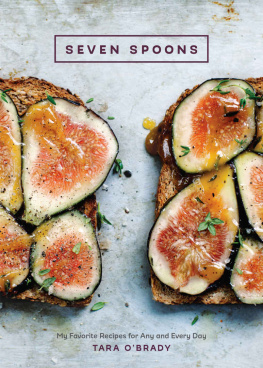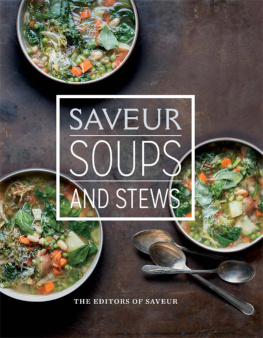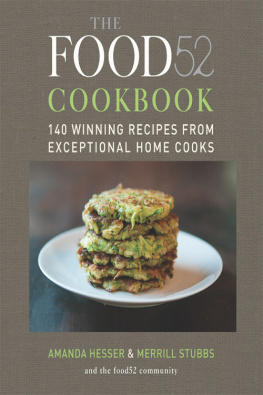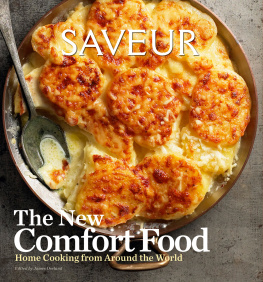I WAS TWELVE YEARS OLD when I first tried duck lorange. My father had taken me to one of Chicagos great old continental restaurants, and as soon as I saw it on the menu, I knew it was what I wanted. It was glorious to behold: the lacquered leg pointed elegantly upward, the breast meat fanned over a sweep of colorful sauce. It was that exquisite first bite, though, that Ill always remember: gamy and rich, sweet and savory, subtle and exuberant all at once. Instantly I was transported to a time and place far from that Midwestern dining room.
That plate of duck marked my first encounter with a truly classic dish. Over my years on this earth as a cook, an eater, and a traveler, Ive come across countless more classics in tiny home kitchens and grand dining rooms, at Heartland county fairs and Southeast Asian hawker centers. Whether a lobster souffl or a grilled cheese sandwich, a plate of pad Thai or a Lebanese kibbeh, these recipes always carry a deeper importance (and, frequently, a deeper deliciousness) than others. A classic epitomizesand helps us understandprovenance, but it also goes beyond that: Its a direct link to a culture, a location, an aesthetic, a moment. Classic recipes are maps, biographies, history lessons on a plate.
Our notion of what constitutes a classic recipe is ever evolving, ever growing. A century ago, the pinnacle of American culinary sophistication was a cream-sauced blanquette de veau right out of Escoffier, and in the 1970s, nothing was more iconic than fondue. Today, we eatand learn from, and lovean entire world of classic foods, from California-style kale salads to aromatic Moroccan tagines.
This quest for the truly classic is at the heart of what we do at SAVEUR. Our missionand our passionis to learn and share those ways of cooking that exemplify people and places. Weve been on this journey for 20 years, and this book is the result of those two decades of obsessive eating, cooking, and exploring. (Recipes from our very first cover story, on the ), but out there in the big, beautiful, delicious world, there are thousands more to discover.
HOW TO USE THIS BOOK

T HE SAVEUR TEST KITCHEN HAS SEEN thousands upon thousands of recipes pass through its ovens and over its stovetops over the years. We rigorously test each recipe multiple times, using consistent methods. As you cook through this book, here are a few things worth keeping in mind.
RECIPES
Always read a recipe start to finish before beginning to cook, to familiarize yourself with the ingredients and techniques, and to get a sense of how long the recipe will take. Some recipes have Cooks Notes at the end; these are there to help you with a particular technique, help you source an ingredient or tool, or give you options for modifying the recipe.
COOKING EQUIPMENT
If a recipe specifies a pot or pan of a certain size (like a 6-qt. saucepan or 10 skillet), use a comparable vessel in order to maintain the integrity of the recipe. Too small a pan, and you may end up steaming chicken rather than searing it; too big a pot, and you may over-reduce a sauce because theres too much surface area.
WATER
We specify water in an ingredient list only if it needs to be heated or chilled to a specific temperature, or if a recipe demands filtered or distilled water that needs to be acquired ahead of time. Otherwise, youll find water listed in the instructions.
SALT
With a few exceptions, our recipes are tested using kosher salt, which tastes better and dissolves faster than table salt.
PEPPER
Pre-ground black pepper rarely stands up to the bite or fragrance of its fresh counterpart. Invest in a pepper grinder and whole peppercorns, and grind your pepper as you need it.
BUTTER
We believe butter should add fat and flavor, but not a briny bitethats salts job. So unless specified, we use only unsalted butter in our recipes.
OIL
For frying and sauting, our preferred neutral oil is canola. Some recipes benefit from olive oil; when its grassy flavor shines, we use extra-virgin, but if the ingredients dont specify, the standard variety is sufficient. Some recipes call for Asian sesame oil, also sold as toasted sesame oil. Be sure not to use light sesame oil; the flavor is very different.
PARSLEY
Unless otherwise noted, we prefer flat-leaf (also known as Italian) parsley, rather than the curly variety, because flat-leaf has a cleaner flavor and texture.
TAMARIND
In recipes that call for tamarind, we generally specify tamarind extract. To make tamarind extract, soak lb. tamarind paste, broken into small pieces, in 1 cup boiling water, occasionally mashing the pulp with your fingers. The strained liquid will keep in the refrigerator for up to 2 weeks.
TOMATOES
To maintain quality and consistency when it comes to canned tomatoes, we use only whole, peeled tomatoes. We then crush, dice, or pure them as needed, with or without their juices. (Note that if a recipe calls for canned whole tomatoes, crushed and you substitute canned crushed tomatoes, the recipe may not turn out exactly.)
FLOUR
When a recipe refers to flour, we mean all-purpose flour. If a recipe calls for a certain varietylike cake flour, rice flour, or whole wheat flourthe ingredient list will specify. We measure flour by volume, using a consistent method: Use a spoon to stir the flour in its container. Transfer flour into a measuring cup one spoonful at a time until the cup overflows, then sweep a knife across the rim to make an even surface.
ALCOHOL
We test our cocktails using widely available national brands that are in the middle of the price spectrum. Avoid bargain-priced spirits; theyre often harsh and poorly balanced. When youre cooking with liquor, always use something youd be more than happy to drink on its own. The alcohol itself may cook off, but the flavor of the drink will remain in the finished dish.
TO MARKET, TO MARKET
While most of the recipes in this book call for ingredients readily found at your favorite local supermarketwhere you can increasingly find ingredients ranging from Thai rice noodles to dried Mexican chilesin a few cases, youll need to look a bit further.
For hard-to-find packaged goods, the internet is your grocery store. There are countless specialty retailers with robust mail-order services online: Just plug your desired product into your favorite search engine and up will pop dozens of specialty retailers that ship quickly and affordably. (More often than not, what youre looking for is right there on amazon.com.) For spices, extracts, and dried fruits and nuts we especially recommend Kalustyans (kalustyans.com); for hard-to-find produce, we usually order from Melissas (melissas.com); and for specialty meats, we turn to Marx Foods (marxfoods.com).


